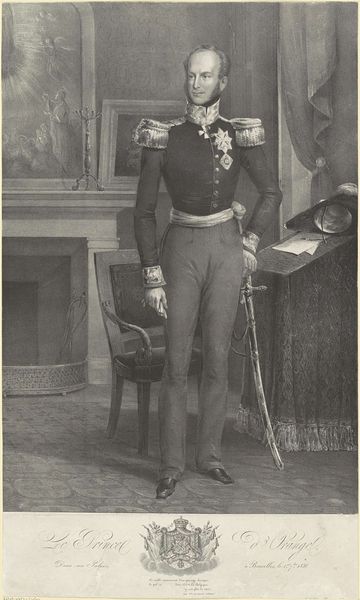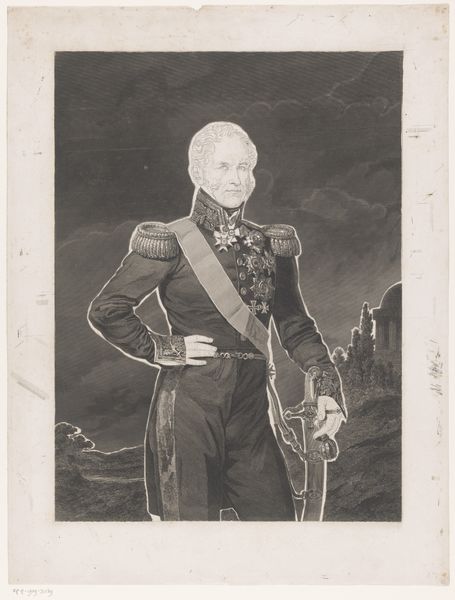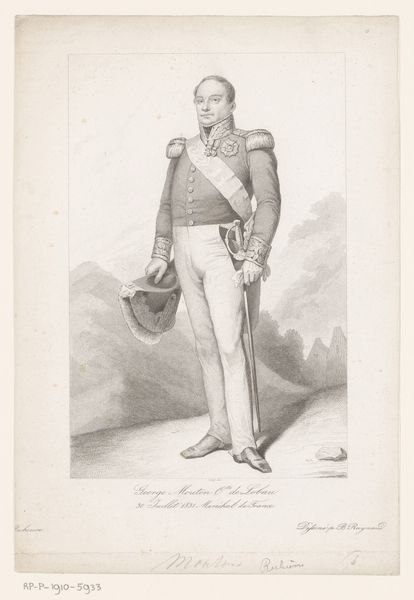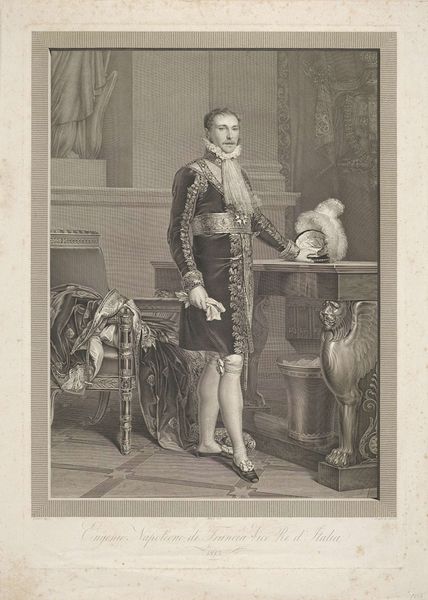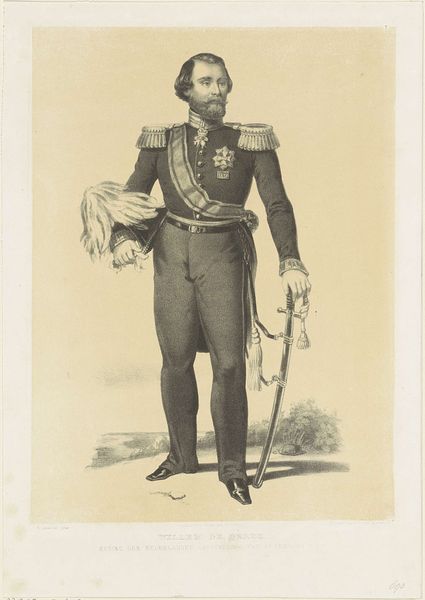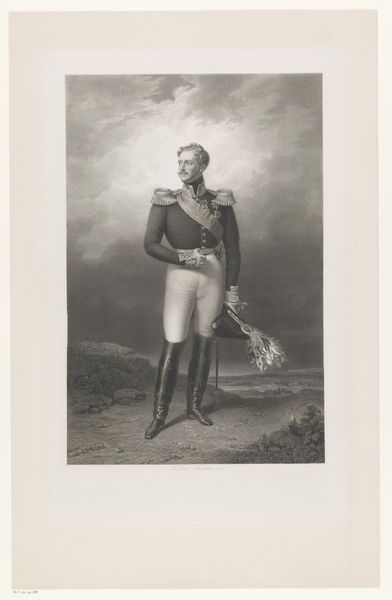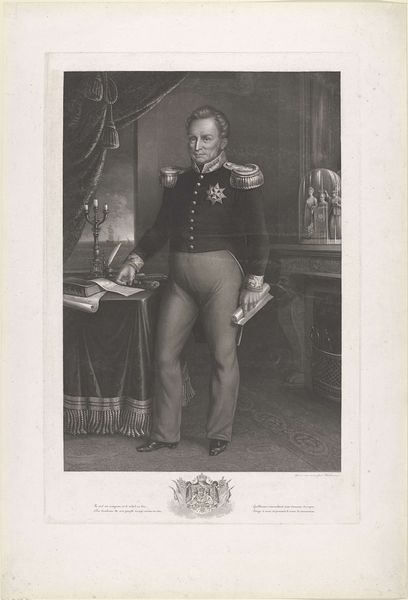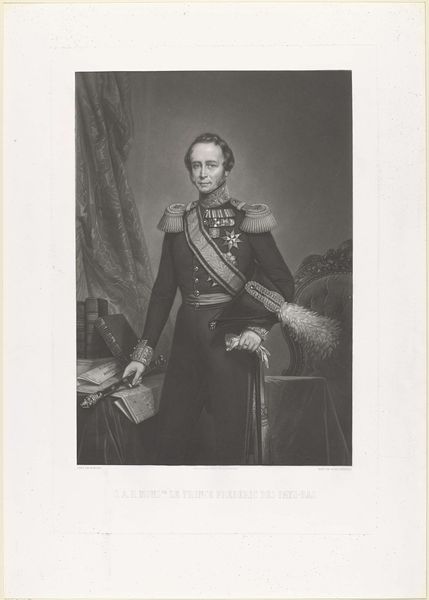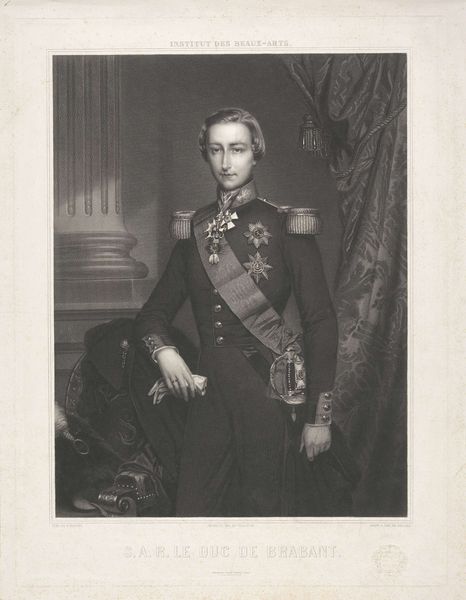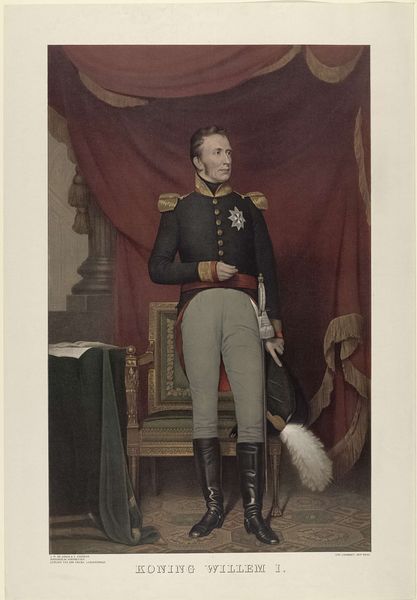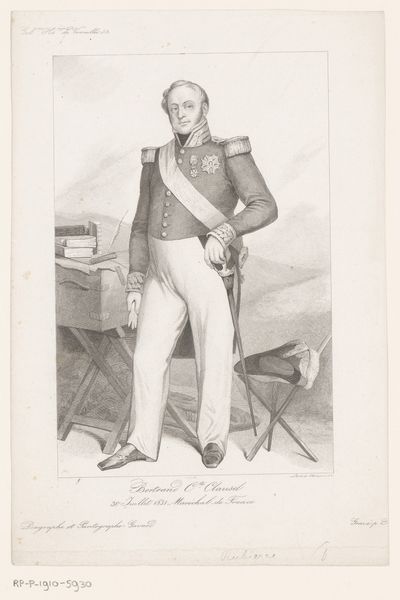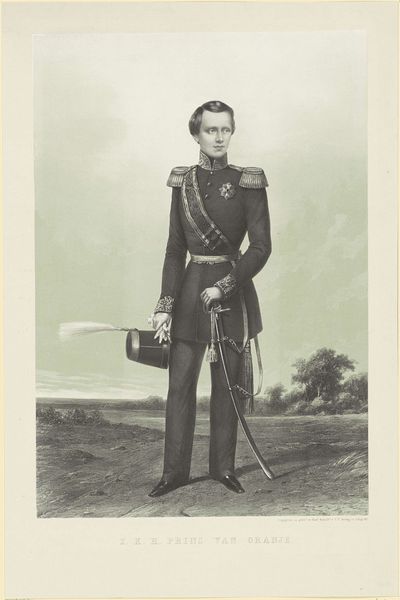
Dimensions: height 659 mm, width 448 mm
Copyright: Rijks Museum: Open Domain
Curator: This engraving, tentatively dated between 1830 and 1839, depicts Willem II, King of the Netherlands. Its academic-art style, referencing both neoclassicism and baroque sensibilities, makes for an intriguing study. Editor: It feels stiff, doesn’t it? Regal, certainly, but also rather constrained. The greyscale lends it a detached air, like a document rather than a celebration. Curator: Well, we need to consider the historical context. Prints like these served a very specific public function. They were designed to circulate images of power and project authority, influencing public perception. The portrait aimed to convey legitimacy at a time of political upheaval. Editor: I suppose, but does it work? Looking at it now, the abundance of detail—the epaulettes, the elaborate decoration—feels like overcompensation, a sort of performative masculinity in a world undergoing major change. There’s something quite vulnerable in that stiff pose and fixed stare. Curator: It reflects the complex politics of the time, where the Netherlands was navigating the independence of Belgium, for example. Willem II's stance becomes especially significant, he wasn't just posing but performing in a politically volatile environment, carefully constructed through imagery. Editor: And what about the framing of that image? He’s flanked by symbols of power and affluence—furniture, a draped curtain, a sword. They almost imprison him! Curator: Such framing reinforces a traditional understanding of royal power, absolutely. But also think of the act of reproducing the image; it democratizes power while simultaneously preserving the social hierarchy by mass-producing the royal persona. These prints made him omnipresent in the lives of people. Editor: Interesting point. Considering contemporary concerns about image proliferation and manipulated realities, there’s something rather unnerving about this manufactured, yet undeniably 'historical,' representation. It’s a reminder that the power of the image to shape perceptions—and manipulate realities—isn’t new at all. Curator: Absolutely. Thinking about its intended impact and enduring resonance opens discussions about visual representation.
Comments
No comments
Be the first to comment and join the conversation on the ultimate creative platform.
